THCA Flower Quality Control: Testing, Standards, and What to Look For
When shopping for THCA flower for sale, quality isn't just a preference—it's a necessity. The explosive growth of the hemp industry has brought incredible innovation and accessibility, but it's also created a landscape where product quality varies dramatically. Whether you're browsing hemp THCA flower from local dispensaries, exploring online THCA flower sale options, or seeking premium high THCA hemp flower for specific needs, understanding quality control standards is your best defense against subpar products.
The challenge many consumers face is straightforward: how do you distinguish between genuinely premium flower and products that merely look the part? With hundreds of vendors competing for attention and marketing language that promises "top-shelf" quality at every turn, the market can feel overwhelming. This is where scientific testing protocols, established industry standards, and educated visual assessment become invaluable tools in your purchasing arsenal.
This comprehensive guide breaks down everything you need to know about THCA hemp flower quality control. We'll explore the laboratory testing that validates product safety and potency, decode what those numbers on Certificates of Analysis actually mean, examine the visual and aromatic cues that experienced consumers rely on, and discuss how cultivation methods impact the final product you receive. Whether you're new to hemp-derived cannabinoids or a seasoned enthusiast looking to refine your selection criteria, understanding these quality markers ensures you get clean, potent, and effective products that deliver on their promises.
Quality control in the hemp industry serves multiple critical functions. First and foremost, it protects consumer safety by screening for contaminants that have no place in products designed for human consumption. Second, it validates legal compliance, ensuring that hemp products meet federal and state regulations regarding THC content. Third, it provides transparency that builds trust between producers and consumers in an industry still establishing its reputation. Finally, robust quality control separates serious, professional cultivators from opportunistic sellers looking to capitalize on market trends without investing in proper production standards.
Laboratory Testing: The Scientific Foundation of Quality
Third-Party Lab Reports: Your First Line of Defense
The Certificate of Analysis (COA) represents the most objective measure of hemp THCA flower quality available to consumers. These documents, issued by independent, accredited laboratories, provide verified data about the product's composition and safety profile. Reputable sellers make these reports readily accessible—typically on their website, linked to specific product pages, or available upon request through customer service channels.
A comprehensive COA for THCA flower for sale should include several critical testing panels. The cannabinoid profile forms the foundation, quantifying not just THCA content but also Delta-9 THC, CBD, CBG, CBN, and other cannabinoids present in the flower. This information serves dual purposes: it confirms the product's potency and effects profile, and it verifies legal compliance with the 0.3% Delta-9 THC threshold that distinguishes hemp from marijuana under federal law.
Beyond cannabinoid content, terpene analysis provides insight into the aromatic compounds that shape the flower's flavor profile and may influence its effects through what researchers call the "entourage effect." Premium labs identify and quantify individual terpenes like myrcene, limonene, pinene, and caryophyllene, allowing consumers to make informed decisions based on their preferences for specific aromatic experiences.
The contaminant screening panels are where safety takes center stage. Pesticide testing scans for residues from both conventional agricultural chemicals and those approved for organic cultivation, ensuring that growers haven't taken shortcuts that compromise consumer health. Heavy metals analysis checks for naturally occurring but potentially dangerous elements like lead, arsenic, cadmium, and mercury that can accumulate in plants grown in contaminated soil. Microbial testing screens for harmful bacteria, mold, and fungus that could pose serious health risks, particularly for individuals with compromised immune systems. Finally, residual solvent testing ensures that any processing hasn't left behind dangerous chemical traces, though this is typically more relevant for extracts than flower.
Understanding the Numbers: Potency and Percentages
When evaluating high THCA hemp flower, many consumers fixate on THCA percentages, assuming higher is always better. While potency matters, this oversimplification misses important nuances. Premium indoor THCA flower typically ranges from 15-30% THCA content, with some exceptional batches reaching even higher levels. However, cannabinoid content represents just one component of the overall experience.
The relationship between THCA percentage and actual effects is more complex than many realize. THCA (tetrahydrocannabinolic acid) is the non-intoxicating precursor to THC. When heated through smoking, vaping, or cooking, THCA undergoes decarboxylation, converting to active THC. The conversion isn't perfectly efficient—typically around 87.7%—meaning that 20% THCA flower converts to approximately 17.5% THC when consumed. Understanding this conversion helps set realistic expectations about potency.
Beyond raw percentages, the total cannabinoid profile matters significantly. A flower with 25% THCA but virtually no other cannabinoids may actually provide a less satisfying experience than one with 20% THCA complemented by meaningful levels of CBD (which can modulate THC's effects), CBG (which may offer its own therapeutic benefits), and other minor cannabinoids. This is why experienced consumers often prefer well-balanced profiles over maximum THCA content alone.
Terpene percentages, while typically measured in single-digit or even fractional percentages, punch well above their weight in terms of influence. Total terpene content above 2% is generally considered excellent, with the specific terpene composition shaping the flower's character. Myrcene-dominant profiles tend toward relaxing effects with earthy, musky aromas. Limonene-forward flowers offer uplifting experiences with bright citrus notes. Pinene-rich varieties may support alertness with fresh, forest-like scents. Caryophyllene-heavy flowers often provide spicy, peppery flavors with potentially anti-inflammatory properties.
Red Flags in Lab Reports
Learning to spot problems in COAs is as important as understanding good results. Be wary of sellers offering THCA flower for sale without readily available lab reports. In today's market, testing is standard practice among reputable vendors—its absence suggests either corner-cutting or something to hide.
Check the dates on lab reports carefully. COAs should be recent and batch-specific. A seller showing the same lab report for multiple products or presenting outdated results (more than six months old for the current inventory) raises questions about their commitment to transparency. Cannabis and hemp degrade over time, and what was tested a year ago doesn't necessarily reflect the current product's condition.
Examine which laboratory conducted the testing. While not all consumers can research every lab's credentials, a few basics apply. The laboratory should be ISO 17025 accredited, meaning it meets international standards for testing and calibration. Labs should also be independent third parties with no financial stake in the results beyond their testing fees. Be skeptical of products tested by laboratories owned by the same company selling the flower.
Finally, scrutinize the actual test results. While cannabinoid and terpene percentages are largely informative, contaminant screens should show clear "pass" or "non-detect" results. Any detected pesticides, heavy metals above safety thresholds, or presence of harmful microbes should be absolute deal-breakers, regardless of how good the cannabinoid profile looks.
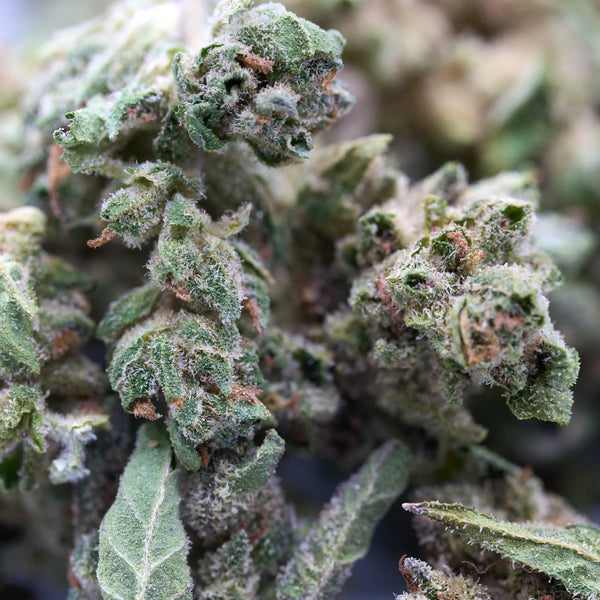
Visual Inspection: What Premium Quality Looks Like
Trichome Coverage: The Crystal-Like Signature of Quality
The most visually distinctive characteristic of premium organic hemp flower is abundant trichome coverage. These tiny, mushroom-shaped glands produce and store the cannabinoids and terpenes that give cannabis its therapeutic and recreational properties. Under natural or bright light, high-quality flower should display a frost-like coating that sparkles with resinous glands.
Trichomes come in several types, but the bulbous-stalked capitate trichomes visible to the naked eye are what most consumers assess. These structures should be densely packed across the flower's surface, particularly on the calyxes (the teardrop-shaped structures that form the bulk of the bud). Sparse trichome coverage often indicates lower cannabinoid content, regardless of what the strain's genetics might promise.
Color provides additional information. Mature, well-timed harvests show trichomes with milky white or cloudy appearances, often with some amber trichomes mixed in. This indicates peak cannabinoid development and appropriate harvest timing. Clear, translucent trichomes suggest premature harvest, while predominantly amber or brown trichomes indicate over-mature flower where THC may have begun degrading into CBN, which can produce more sedative effects.
The integrity of trichomes also matters. Rough handling, improper storage, or mechanical harvesting and trimming can knock trichomes off the flower, leaving behind less potent material. Look for intact gland heads rather than just the broken stalks that remain after trichomes have been lost. Premium indoor THCA flower typically shows minimal trichome damage, reflecting careful handling throughout the post-harvest process.
Color, Structure, and Curing: The Details That Matter
Cannabis flower displays a remarkable range of colors, but not all color variations indicate quality. Healthy hemp THCA flower typically shows vibrant forest greens, though genetics can introduce stunning purple, pink, or even near-black hues from anthocyanin compounds. These colorful accents often emerge during flowering when cooler temperatures trigger anthocyanin production, particularly in strains with genetic predisposition toward these pigments.
What you don't want to see are brown, yellow, or bleached-out colors that suggest degradation, light damage, or poor curing. Brown discoloration can indicate improper drying that allowed oxidation, while uniform yellowing might suggest nutrient deficiencies during growth or extended exposure to light during storage. Bright, unnatural-looking colors could result from dyes or additives, though this practice is rare enough that encountering it should prompt immediate questions.
The physical structure of quality buds reflects both genetics and growing conditions. Dense, compact buds typically come from indoor or greenhouse cultivation where light intensity remains consistent throughout flowering. These structures maximize surface area for trichome development while minimizing stem weight. However, density alone doesn't define quality—some sativa-dominant strains naturally produce airier, more elongated flowers that can still deliver exceptional experiences.
Premium flower shows professional trimming that removes excess leaf material without damaging the cannabinoid-rich calyxes underneath. Machine-trimmed flower sometimes displays a uniform, almost geometric appearance, while hand-trimmed buds often retain more natural structure and fewer signs of mechanical damage. Neither approach is inherently superior, though hand-trimming generally preserves more trichomes when done carefully.
The curing process fundamentally shapes the final product's quality, even if it's less immediately visible than trichome coverage or color. Properly cured THCA hemp flower feels neither bone-dry nor spongy-moist. When you break apart a bud, it should offer slight resistance and emit a fresh, pungent aroma. Stems should snap rather than bend, indicating appropriate moisture levels that prevent mold while preserving cannabinoids and terpenes.
Over-dried flower crumbles into powder and often releases weak, hay-like aromas as volatile terpenes have evaporated. This degradation can't be reversed—once terpenes are lost, they're gone. Conversely, insufficiently dried or cured flower feels damp, may smell musty or grassy rather than pungent and complex, and carries genuine risks of developing mold during storage. Neither extreme represents acceptable quality, regardless of the genetics or growing methods employed.
Regional and Growing Standards: Where and How Matters
Indoor vs. Outdoor Cultivation: Understanding the Differences
The debate between indoor THCA flower and outdoor cultivation touches on quality control, environmental impact, and consumer preferences. Indoor growing provides unprecedented control over every environmental variable that influences cannabis development. Growers can dial in perfect temperature ranges, humidity levels, light spectrums and intensities, CO2 concentrations, and nutrient delivery, creating ideal conditions that simply don't exist in nature.
This control translates to several quality advantages. Indoor flower typically shows denser trichome development because light intensity remains consistent throughout the canopy, and environmental stressors are minimized. Cannabinoid profiles tend toward greater consistency from plant to plant and batch to batch, as controlled conditions reduce the variables that might cause fluctuations. Pest and mold prevention becomes more manageable in sealed environments where growers can implement integrated pest management strategies without fighting the full spectrum of outdoor pathogens and insects.
Indoor cultivation also enables multiple harvests per year by controlling photoperiods, allowing producers to deliver fresh flower consistently rather than seasonal crops. This can mean fresher products for consumers if sellers maintain good inventory rotation. The enclosed environment also protects developing flowers from weather-related damage—no hail, excessive rain, or wind damage to concern growers or consumers.
However, outdoor cultivation offers its own advantages that some consumers prefer. Sun-grown flower often develops robust terpene profiles with complexity that some find superior to indoor offerings, as plants respond to natural environmental fluctuations with defensive compound production. The environmental footprint of outdoor growing is substantially smaller, using renewable solar energy rather than intensive artificial lighting. For consumers prioritizing sustainability, this matters significantly.
Greenhouse cultivation attempts to bridge these approaches, providing protection from weather and pests while utilizing natural sunlight supplemented by artificial lighting as needed. Light-deprivation techniques allow growers to control flowering times while benefiting from solar energy. The result often splits the difference between indoor control and outdoor character.
Regional Reputation: Why Location Matters
Geographic origin influences THCA flower for sale quality in several ways. Oregon THCA flower, for example, benefits from the state's decades of experience in cannabis cultivation, first in the medical marijuana space and later in adult-use and hemp markets. This institutional knowledge means Oregon growers often understand cultivar selection, integrated pest management, harvesting timing, and post-harvest handling at levels that newer markets are still developing.
Established cultivation regions typically maintain higher community standards through peer accountability, industry associations, and accumulated best practices shared among growers. States with mature hemp regulations often enforce stricter testing requirements and compliance oversight, providing additional quality assurance. Conversely, regions where hemp cultivation is newer may see more variability in quality as the market and regulatory framework mature.
Climate also plays a role. Hemp thrives in temperate regions with adequate rainfall, moderate temperatures, and consistent growing seasons. Areas matching these conditions often produce superior outdoor flower simply because the plants experience less environmental stress. Indoor cultivation negates these advantages, but even indoor growers in regions with suitable climates may benefit from lower cooling costs and easier access to quality genetics from local breeders.
The regulatory environment matters significantly. States with comprehensive hemp programs typically require more robust testing, maintain clearer legal frameworks, and provide better guidance to cultivators about compliance. This regulatory clarity tends to elevate overall market quality as sub-standard producers face consequences for failing to meet established standards.
What to Ask Before You Buy
Critical Questions for Sellers
Before purchasing hemp THCA flower, engaging sellers with informed questions helps separate reputable vendors from those hoping you won't ask. Start with the most fundamental: "Can I see the Certificate of Analysis for this specific batch?" The response tells you volumes. Legitimate sellers provide COAs immediately, often proactively displaying them on product pages. Hesitation, excuses, or vague promises to send them "later" should trigger immediate skepticism.
Ask about cultivation methods: "Was this grown indoors, outdoors, in greenhouses, or using supplemental lighting?" Follow up with questions about growing media (soil, coco coir, hydroponic systems), nutrient programs (synthetic or organic), and pest management approaches. Knowledgeable sellers can discuss their cultivation practices or their sources' methods in detail. Vague answers or obvious discomfort with these questions suggest limited product knowledge or potentially substandard growing conditions.
Harvest and processing dates matter more than many consumers realize. Ask: "When was this flower harvested, and when was it packaged?" Fresh flower—generally within 6-12 months of harvest—delivers more vibrant terpene profiles and better overall experiences than products that have sat in storage for extended periods. While properly stored cannabis remains viable much longer, terpene degradation accelerates after the first few months, impacting flavor and aromatic qualities significantly.
Return policies and satisfaction guarantees demonstrate seller confidence in product quality. Ask: "What's your return or exchange policy if I'm not satisfied with the quality?" Companies offering high THCA hemp flower they truly believe in typically stand behind their products with reasonable return windows or replacement policies. Sellers unwilling to offer any recourse for dissatisfied customers may lack confidence in what they're selling.
Understanding Pricing and Value
Price alone doesn't determine quality, but the relationship between cost and value provides useful information. Extremely low prices on THCA flower sale items should prompt questions. Premium cultivation, comprehensive testing, and careful handling all cost money—products priced significantly below market averages may reflect corners cut somewhere in the production chain.
However, higher prices don't guarantee superior quality either. Some sellers rely on premium branding and marketing to justify elevated prices for products that don't deliver commensurate quality. This is where your developing expertise in evaluating COAs, visual inspection, and asking informed questions becomes invaluable. The goal is finding the sweet spot where price reflects genuine quality without paying for pure marketing hype.
Consider the total cost per unit of cannabinoid content as one metric. A product with 20% THCA selling for thirty dollars per eighth (3.5 grams) contains roughly 700mg of THCA, while a 25% THCA product at forty dollars per eighth contains approximately 875mg. The higher-potency option costs more per gram but delivers more cannabinoid per dollar spent—assuming quality is otherwise comparable. This math helps identify genuine value beyond surface-level pricing.
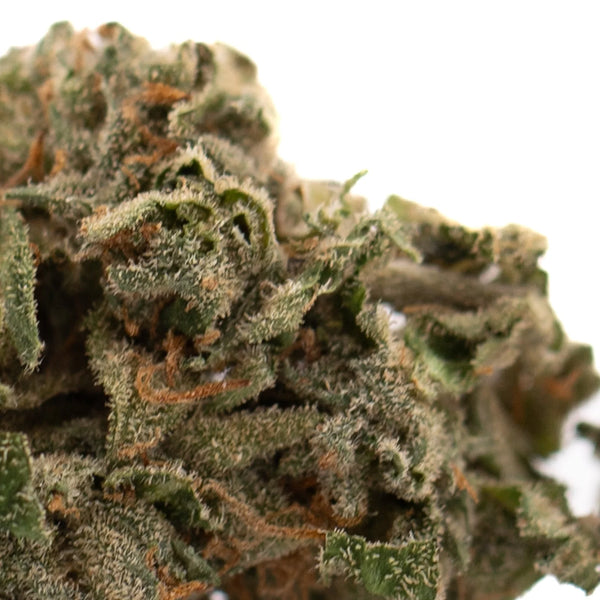
The Organic Advantage: Cleaner Cannabis for Health-Conscious Consumers
What Organic Certification Means
Organic hemp flower represents the gold standard for consumers prioritizing clean cultivation practices. While the USDA's National Organic Program doesn't directly certify cannabis or hemp flower intended for smoking or vaping (only hemp grown for fiber, seed, or CBD oil), many cultivators follow organic principles and some obtain state-level organic certifications where available.
True organic cultivation eliminates synthetic pesticides, herbicides, and fertilizers in favor of natural alternatives. This means no glyphosate, no neonicotinoids, no organophosphates, and none of the other controversial agricultural chemicals that concern health-conscious consumers. Instead, organic growers rely on compost, cover crops, beneficial insects, companion planting, and other ecological approaches to pest and nutrient management.
The benefits extend beyond eliminating synthetic chemicals. Organic soil management typically builds healthier living soil ecosystems teeming with beneficial microbes that help plants access nutrients and resist disease. Many consumers and cultivators believe this approach produces superior terpene profiles with more complex, authentic aromas that reflect the plant's genetic potential without chemical interference.
However, the organic designation requires verification. Without official USDA organic certification for hemp flower, consumers must rely on seller transparency about cultivation practices and third-party lab testing that screens for pesticide residues. Reputable organic growers provide detailed information about their cultivation methods and welcome questions about their practices.
The Investment in Clean Cannabis
Organic cultivation costs more than conventional growing. Natural pest management requires more labor and expertise than simply spraying synthetic pesticides. Building healthy organic soil takes time and investment that synthetic nutrient programs sidestep. Organic operations typically see slightly lower yields as they optimize for quality and sustainability rather than maximum production.
These costs translate to higher prices for consumers, but many consider the investment worthwhile. Beyond potential health benefits from reduced chemical exposure, organic THCA hemp flower often delivers cleaner flavor profiles where terpenes shine without chemical undertones some users detect in conventionally grown flower. The environmental benefits—reduced water contamination, soil health preservation, and lower overall ecological impact—align with values many hemp consumers hold.
For individuals with chemical sensitivities, compromised immune systems, or simply strong preferences for clean products, the organic premium buys peace of mind that's difficult to quantify financially. When consuming a product you're inhaling directly into your lungs, knowing it was grown without synthetic pesticides or chemical fertilizers provides assurance that conventional products can't match.
Storage and Freshness Indicators: Keeping Quality Intact
How Improper Storage Degrades Even Premium Flower
Even the highest-quality indoor THCA flower deteriorates rapidly without proper storage. Understanding degradation factors helps consumers both evaluate products before purchase and maintain quality after bringing flower home.
Light exposure is cannabis's primary enemy during storage. Ultraviolet radiation degrades cannabinoids and terpenes, particularly THC, which converts to CBN with extended light exposure. This is why premium packaging uses opaque containers—amber glass jars, foil-lined bags, or solid containers that block light completely. Clear packaging might showcase product visually, but it compromises long-term quality significantly.
Temperature fluctuations accelerate degradation. Heat speeds chemical reactions that break down cannabinoids and volatilize terpenes, while extreme cold can damage trichome structures. The ideal storage temperature is cool and consistent—around 60-70°F (15-21°C)—away from heat sources like radiators, appliances, or direct sunlight.
Humidity control prevents multiple problems. Too much moisture (above 65% relative humidity) creates conditions where mold and mildew thrive, potentially rendering entire stashes unsafe. Too little moisture (below 55% RH) over-dries flower, making it harsh, brittle, and causing terpene evaporation. The sweet spot of 58-62% relative humidity preserves flower in ideal condition, maintaining the slight tackiness that indicates proper moisture content.
Oxygen exposure oxidizes cannabinoids and terpenes over time, though this occurs much more slowly than light or heat degradation. Minimizing air exposure through sealed containers helps preserve quality, though removing all oxygen isn't necessary for typical storage periods. Some premium products use nitrogen flushing to displace oxygen, but for most consumers, simply sealing containers tightly after each use suffices.
Recognizing Fresh vs. Degraded Products
Your senses provide immediate feedback about THCA flower for sale freshness. Aroma serves as the most reliable indicator. Fresh flower releases strong, complex scents immediately upon opening the container—pungent, dank, citrusy, piney, fruity, or whatever terpene profile the strain expresses. These aromas should intensify when you break buds apart, releasing additional terpenes from disrupted trichomes.
Degraded flower smells muted, hay-like, musty, or simply weak compared to fresh products. If you need to hold a bud directly under your nose and inhale deeply to detect any aroma, terpenes have already significantly degraded. While the flower might still contain reasonable cannabinoid levels, the experience will be substantially compromised compared to fresh material.
Texture provides additional clues. Fresh, properly stored flower feels slightly sticky when broken apart, though not wet or damp. It should offer some resistance when compressed, then spring back partially. Over-dried flower crumbles easily, turns to dust when ground, and often produces harsh smoke. While adding humidity packs can restore some moisture, they can't recover lost terpenes.
Color shifts also indicate age or degradation. While not as immediately concerning as aroma or texture changes, noticeable browning, yellowing, or fading of once-vibrant colors suggests extended storage or improper handling. Combined with other freshness indicators, color changes confirm suspicions about product age.
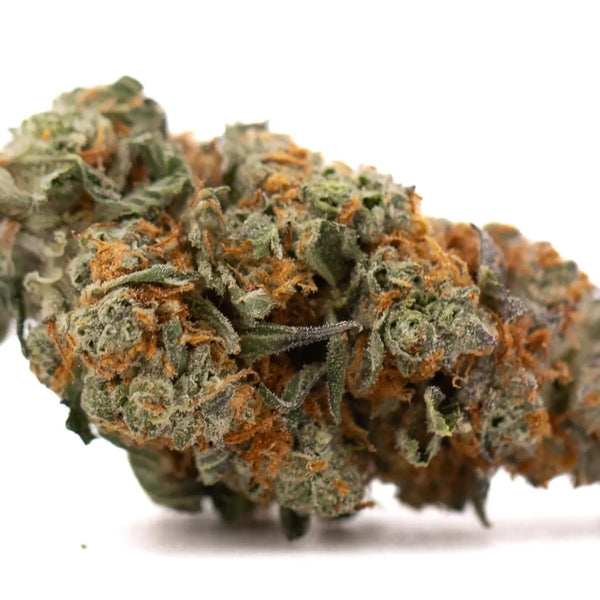
Frequently Asked Questions About THCA Flower Quality
Q: What THCA percentage should I look for in quality flower?
Premium high THCA hemp flower typically contains 15-30% THCA, though percentages alone don't define quality. A balanced cannabinoid and terpene profile often provides better experiences than maximum THCA content in isolation. Consider total terpene percentages above 2% as indicators of well-grown, properly processed flower. Remember that effects depend on the complete chemical profile, not just one cannabinoid.
Q: How can I tell if a COA is legitimate?
Legitimate Certificates of Analysis come from ISO 17025 accredited, independent third-party laboratories with no financial connection to the seller beyond testing fees. Check that the COA includes the lab's name, contact information, accreditation details, testing dates, and batch-specific identifiers that match the product you're considering. Be wary of generic or outdated lab reports that sellers use across multiple products or time periods.
Q: Does indoor flower always beat outdoor quality?
Not necessarily. Indoor THCA flower offers consistency and dense trichome development, but outdoor flower can develop exceptional terpene complexity and character. Some consumers prefer the robust profiles from sun-grown cannabis. Both cultivation methods can produce premium results—focus on the specific product's test results, visual inspection, and freshness rather than cultivation method alone.
Q: How long does THCA flower stay fresh?
With proper storage in cool, dark, humidity-controlled conditions, quality THCA hemp flower maintains peak freshness for 6-12 months after harvest. Beyond this window, terpene degradation becomes increasingly noticeable even with careful storage. Cannabinoid content degrades more slowly than terpenes, so older flower may still test high for THCA but deliver diminished aromatic experiences.
Q: Are pesticides a serious concern in hemp flower?
Yes. Unlike regulated cannabis markets where testing is mandatory, hemp oversight varies significantly. Some producers use pesticides not approved for products intended for smoking. Third-party lab testing for pesticide residues is essential—never purchase hemp THCA flower without verified pesticide-free COAs, as inhaling pesticide residues poses genuine health risks.
Q: What's the difference between THCA and Delta-9 THC in lab reports?
THCA is the non-intoxicating acidic precursor to THC. Hemp products must contain less than 0.3% Delta-9 THC to remain federally legal, but THCA content can be much higher. When heated (smoked, vaped, cooked), THCA converts to active THC through decarboxylation. This legal distinction allows THCA flower for sale to deliver experiences similar to traditional cannabis while maintaining hemp legal status.
Q: Why do some strains look purple or have other colors?
Color variations in organic hemp flower come primarily from anthocyanin pigments that develop based on genetics and growing conditions. Cool temperatures during flowering often intensify purple, pink, or red hues in genetically predisposed strains. These colors don't indicate higher quality or potency—they're simply genetic expressions. Judge quality by trichome coverage, aroma, and lab testing rather than color alone.
Q: Should I buy based on strain name or test results?
Both matter, but test results provide objective data while strain names are often unreliable in the hemp market. The same strain name from different growers may produce vastly different cannabinoid and terpene profiles. Use strain information as a starting point, but verify quality through COAs, visual inspection, and freshness indicators rather than relying on names alone.
Conclusion: Your Quality Checklist for Confident Purchases
Navigating the THCA flower for sale market with confidence requires understanding the scientific testing, visual cues, cultivation practices, and storage factors that separate premium products from disappointing ones. Quality high THCA hemp flower requires significant investment from growers—in testing protocols, careful cultivation, proper handling, and transparent business practices. By understanding these standards, you can confidently identify products worth your investment and skip those that aren't.
Your essential quality checklist includes verifying third-party lab testing with comprehensive cannabinoid profiles, terpene analysis, and contaminant screening. Inspect trichome coverage and overall bud structure, looking for the crystal-coated appearance that indicates high cannabinoid concentrations. Check harvest dates and packaging to ensure freshness—products within 6-12 months of harvest deliver optimal terpene preservation and overall quality. Consider cultivation methods, with indoor THCA flower offering consistency and outdoor providing unique character. Evaluate sellers based on their transparency, product knowledge, and willingness to stand behind quality with reasonable return policies.
Whether you're exploring Oregon THCA flower from established cultivation regions, seeking organic hemp flower grown without synthetic chemicals, or browsing THCA hemp flower options from various sources, these quality markers ensure you get clean, potent, and effective products. The hemp industry continues maturing, with quality standards rising as experienced cultivators set benchmarks and educated consumers demand transparency.
For first-time buyers and seasoned enthusiasts alike, quality control knowledge empowers better purchasing decisions. It protects you from wasting money on subpar products, reduces exposure to contaminants that have no place in hemp flower, and helps you find the products that deliver the experiences you're seeking. The time invested in learning these standards pays dividends in every purchase, transforming shopping from guesswork into informed decision-making.
Premium THCA flower sale offerings from reputable vendors reflect the care, expertise, and investment required to produce truly exceptional hemp flower. By applying the knowledge from this guide—demanding comprehensive lab testing, inspecting products carefully, asking informed questions, and understanding storage best practices—you ensure that every purchase meets the high standards that quality hemp products deserve. Your informed choices also reward conscientious growers and sellers who prioritize quality over shortcuts, encouraging continued industry improvement.
The hemp market offers unprecedented choice, but with that choice comes responsibility to evaluate critically rather than accepting marketing claims at face value. Armed with understanding of laboratory testing protocols, visual quality indicators, cultivation method impacts, and freshness factors, you're equipped to navigate the market with confidence. Whether you prioritize maximum potency, exceptional terpene profiles, organic cultivation practices, or simply reliable consistency, these quality control principles guide you toward products that deliver on their promises and justify their price points.
Quality hemp THCA flower exists abundantly in today's market, but so do inferior products hoping you won't know the difference. Now you do. Use this knowledge to demand better, shop smarter, and enjoy the clean, potent, and effective experiences that premium hemp flower provides when produced with proper attention to quality at every stage from seed to sale.

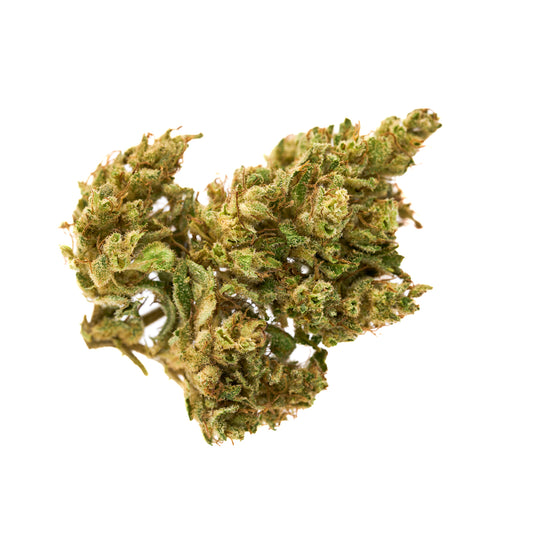
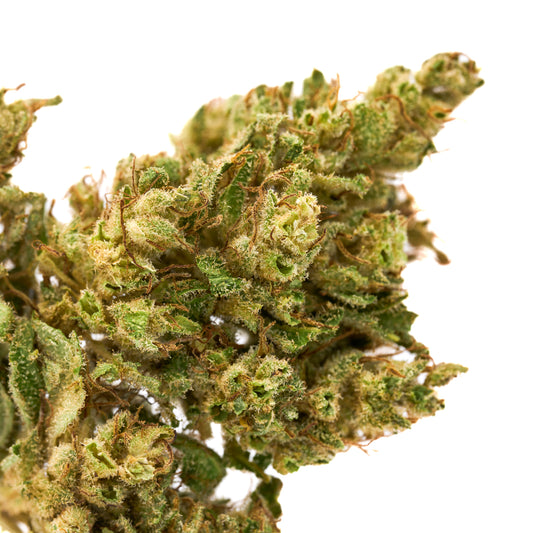
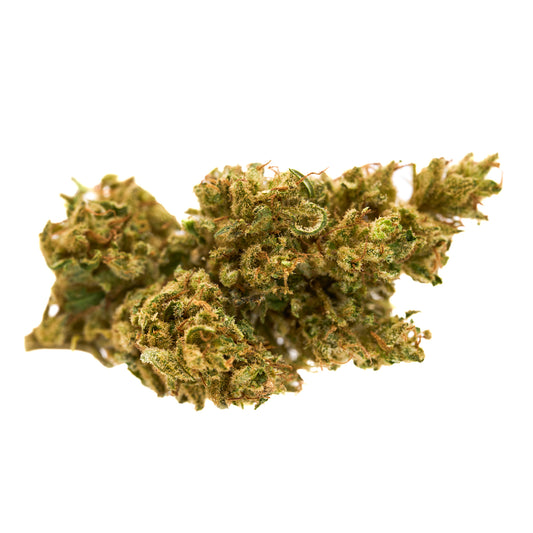
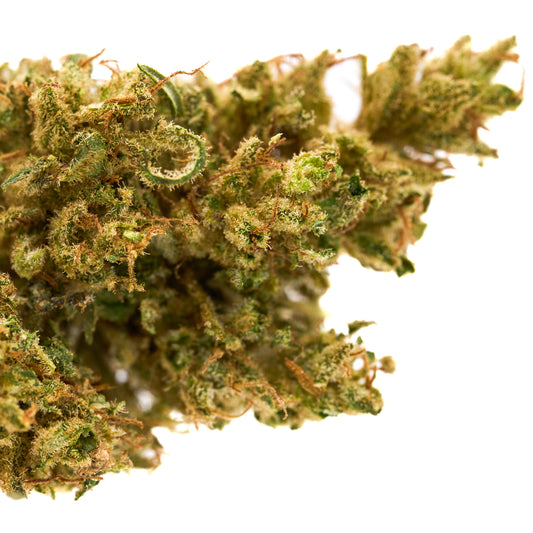
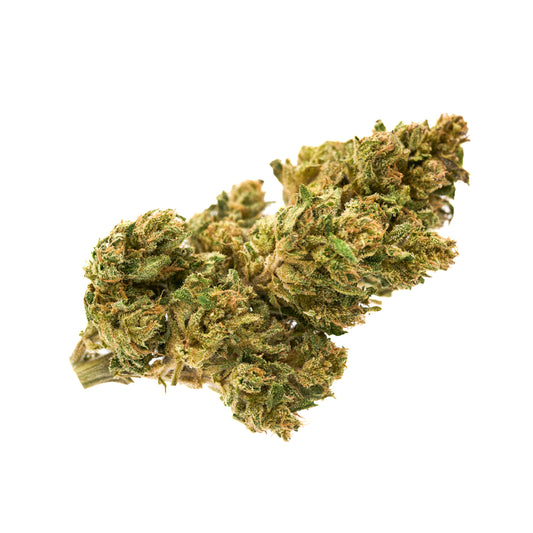
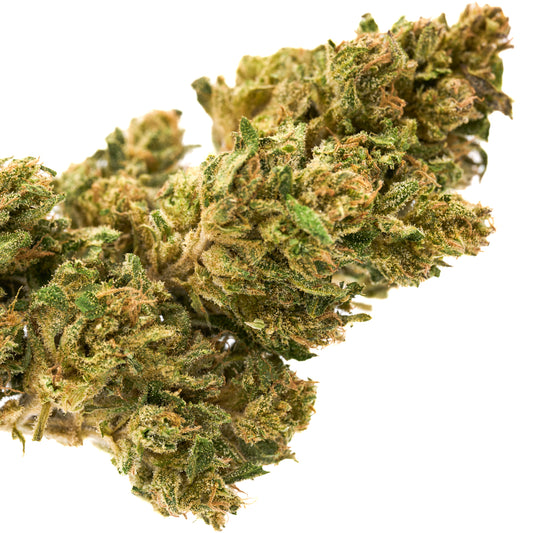


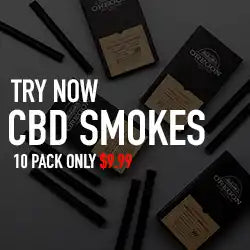
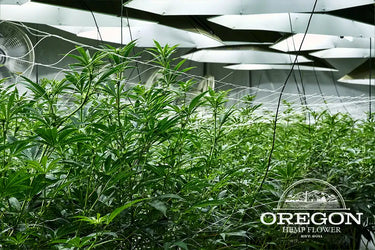

Leave a comment
Please note, comments need to be approved before they are published.